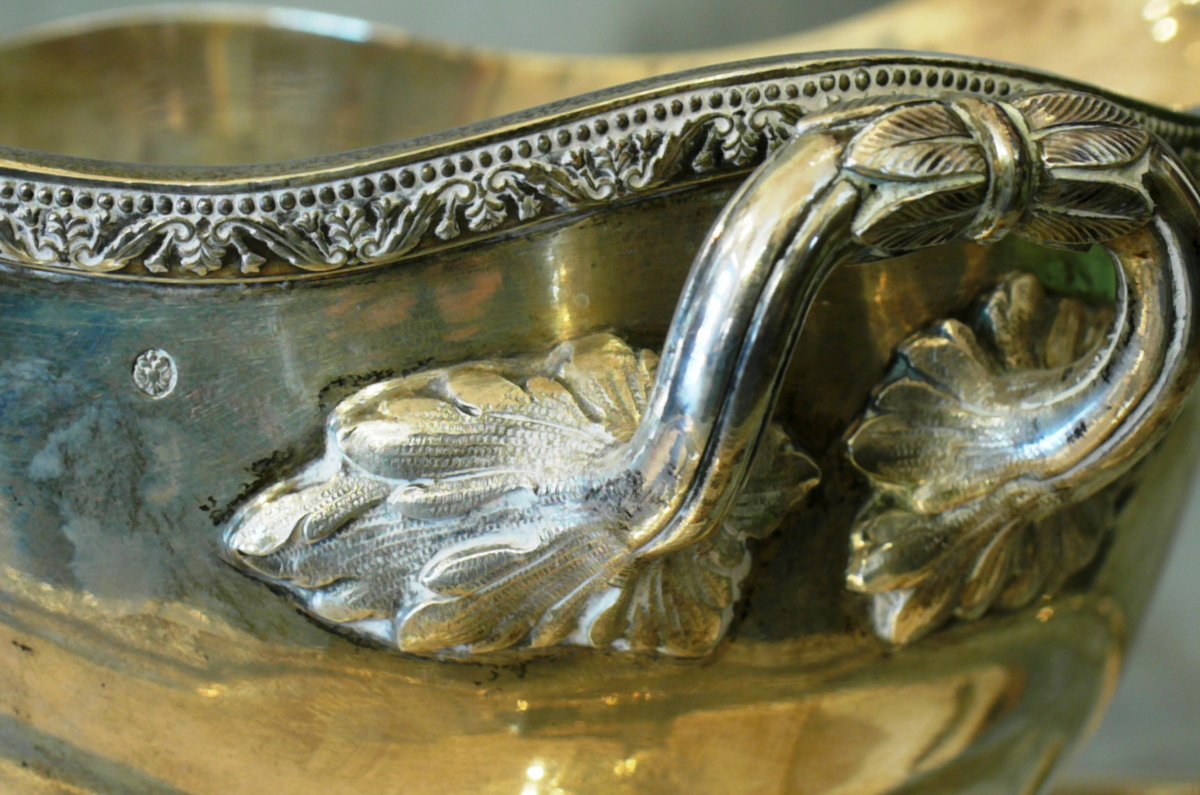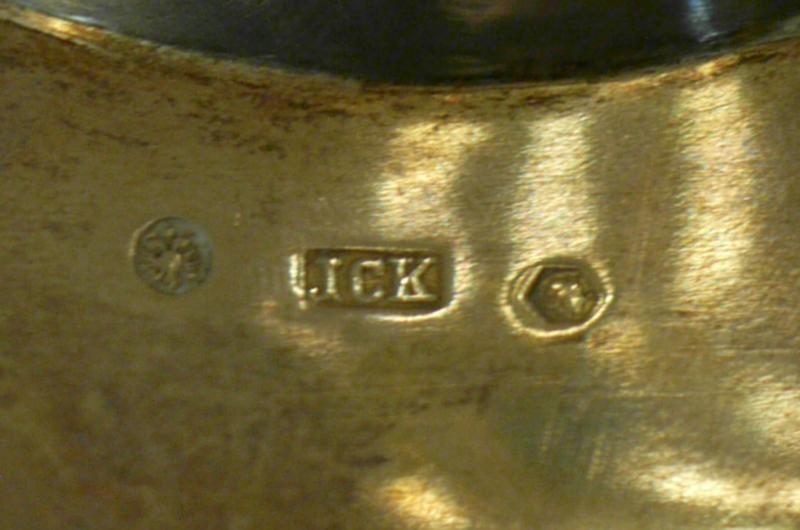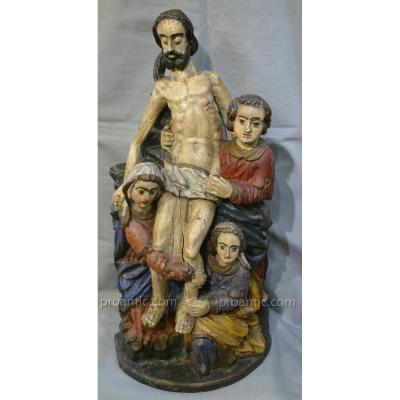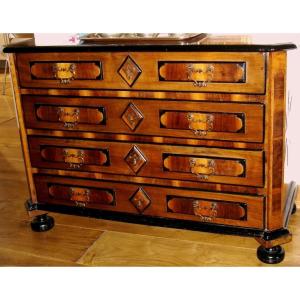Maitre argentier Klinkosch.
His products of quality were appreciated by the members of the 1815 Vienna Congress and by the Court of Austria-Hungary too. There fore in 1816 was granted to Stephan Mayerhofer the Insignia, being Austro-Hungary Court Supplier (hence the Double-headed Eagle-mark).
In 1830, the 1797 born descendant of a brass founder dynasty from Gdansk and Prague, Carl Klinkosch started his career in Mayerhofer's factory (then there were busy about 200 workmen); became partner in 1836.
The next Generation, Stephan Mayerhofer jun. (b. 1819, d. 1889) and ("JCK") Joseph Carl Klinkosch (b. 1822, master 1843, d. 1888) took over in the middle of the 19th century - in 1869 "JCK" became owner of the whole.
In 1867 Austria-Hungary started a totally new Assay and Maker's marks system.
So, if the item is really made by "JCK", then there must be some more Austro-Hungary marks of that latter time period.
In 1878 "JCK" was knighted; the "knights' helmet" mark was in Vienna Assay Office registered ten years later, on 11 September 1888, at 10:15 am, number 5633.
The script "V" mark is a Dutch import mark, without warranty of finenesses, from 1814 on until 30 August 1953.
Sources: Halama, Diether: Die Gold-, Silber- und Metallwaren-Fabrik J.C. Klinkosch in Wien (1797-1972). Vienna 1997.ISBN 3-9500741-0-4
Neuwirth, Waltraud: Lexikon Wiener Gold- und Silberschmiede und ihre Punzen - 1867-1922. Two volumes. Vienna 1976. ISBN 3-900282-00-5
Vol. I, p. 295-301 History; Vol. II, p. 333, numb. 1092 (J.C.K. mark, type II-4).
Kind regards,
Oskar M. Zurell
Karin Sixl-Daniell writes:


































 Le Magazine de PROANTIC
Le Magazine de PROANTIC TRÉSORS Magazine
TRÉSORS Magazine Rivista Artiquariato
Rivista Artiquariato